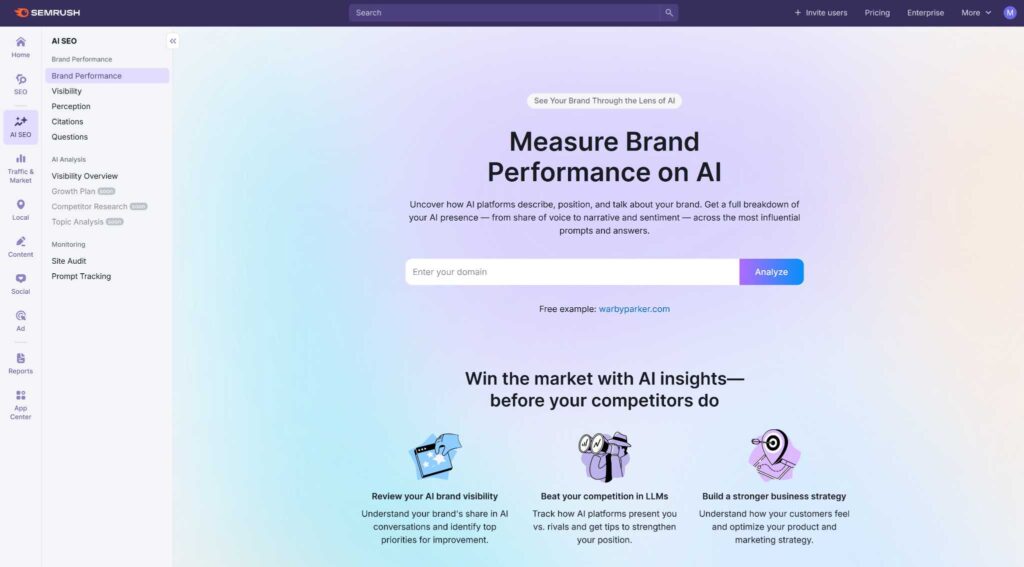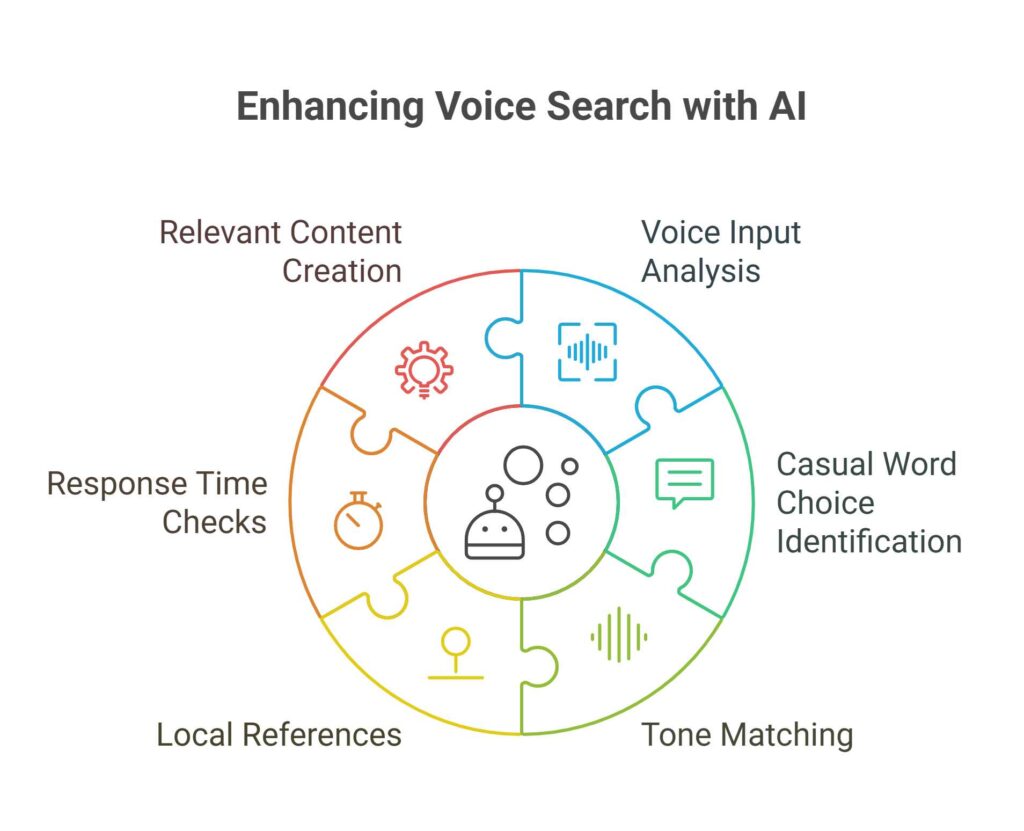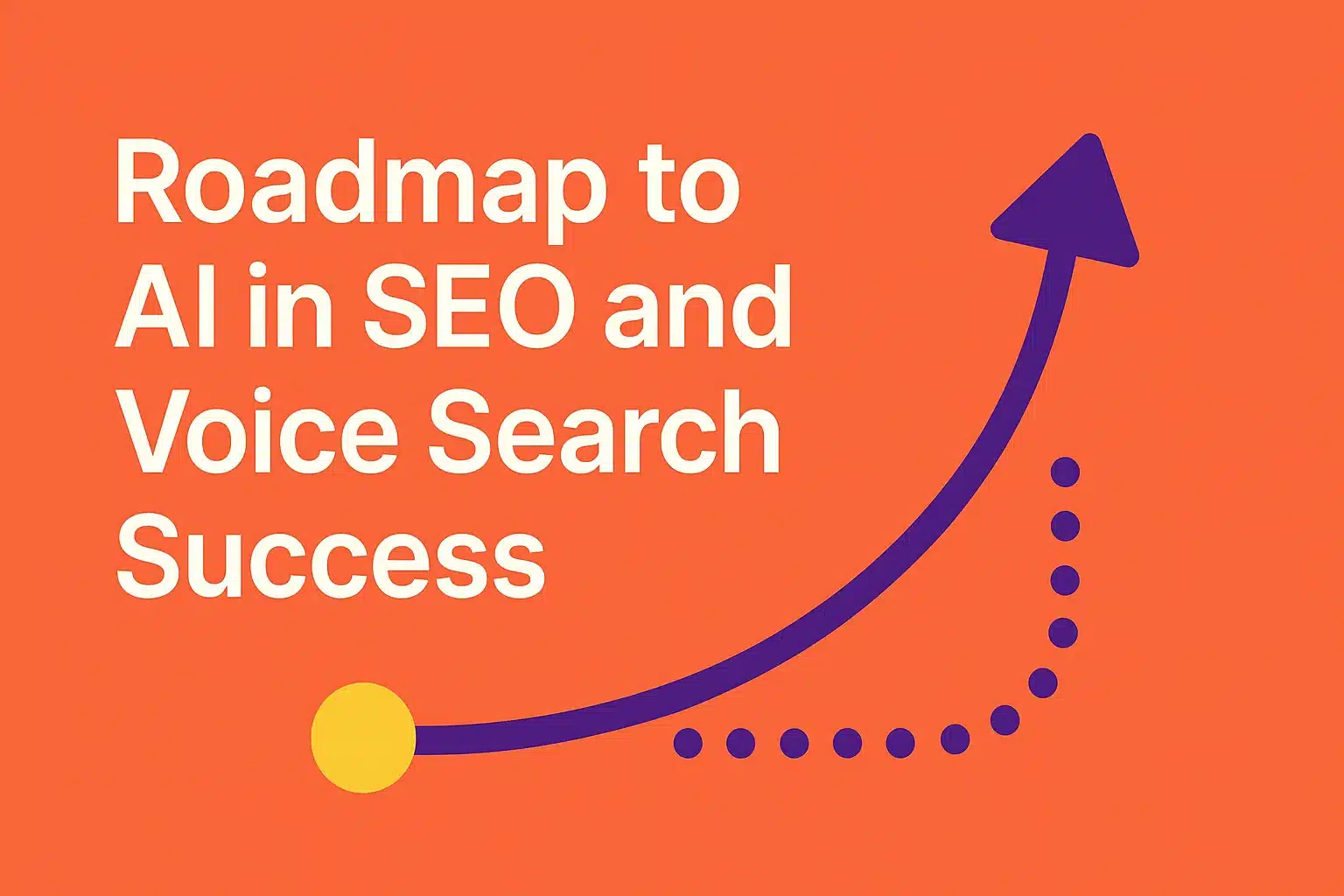AI is shaping how websites rank; the main focus is to adapt quickly to stay relevant. As more people searching by voice, businesses need a strategy that covers AI-based analysis, content adjustments, and voice-friendly structures. Knowing how AI in SEO meets voice search optimization can help in securing stronger positions on search engine results pages. This blog explores the important role of AI in modern SEO, plus a guide for matching content strategies with voice queries and user needs.
SEO has moved from simple keyword listings to advanced techniques powered by machine intelligence. More people across many regions prefer hands-free, voice-focused exchanges, which changes optimization tactics. This blog covers a plan for merging AI with SEO, guiding you to improve content, track metrics, and embrace informal requests.
Understand the Role of AI in SEO Today
AI in SEO adapts to changing user trends by studying search queries and patterns faster than manual methods. It helps improve keyword targeting, create relevant content, and identify technical improvements. Machine learning systems study large amounts of data to find small ranking signals, allowing more accurate adjustments. As a result, websites align with user intent and become more visible. AI also speeds up tasks like site audits, link suggestions, and content optimization. These findings inform strategies that keep up with changing algorithms. AI-based approaches keep websites able to compete, as search engines reward user-focused pages. By embracing AI in SEO, marketers create deeper engagement, respond to changing behaviors, and get better positions for their brands. These efforts improve results.
How AI is changing search engine behavior
Search engines process 5.9 million queries every minute worldwide (ResearchFDI). AI refines this process by figuring out user intent and giving more personalized results. Algorithms now adapt to context instead of relying on basic keyword inputs. By using machine learning, search engines identify patterns in browsing habits. This approach favors pages that match user needs. AI shapes ranking formulas, producing targeted suggestions and evolving with shifting trends. It also improves personalization.
“AI won’t do the strategy for you. It gives us speed and scale, but the human role is guiding it to align with brand and audience.”
— Rand Fishkin, Co-founder of Moz & SparkToro
Ways AI improves content ranking and visibility
AI changes ranking over time by tailoring search outcomes, which increases relevance for each visitor (ResearchFDI). AI-driven algorithms analyze user intent, then match content that fits specific interests. Targeted keywords become more effective as AI tools discover overlooked terms. Predictive analysis also predict shifts in popular searches, encouraging timely content updates. These factors increase visibility on results pages. AI refines how sites respond to real-time needs and secure better rankings.
AI tools that power smarter SEO strategy
Detailed platforms enable smarter SEO by showing keyword opportunities and competitor weaknesses. By 2030, AI may add $19.9 trillion to global GDP (ResearchFDI). Tools like leading SEMrush and Ahrefs use machine learning to analyze search volume and difficulty. Automated audits flag site issues for quick correction. Systems such as ChatGPT assist with quick content drafts while maintaining clarity. These resources help grow strategies and stay current with evolving search patterns.
Build a SEO Roadmap with AI Integration
Building a roadmap with AI means setting specific goals for keyword choices, content creation, and regular analysis. AI finds patterns in search traffic, helping make better choices about what topics to prioritize. It automates audits to find broken links or performance bottlenecks, saving time and increasing certainty. It also refines strategies by predicting new trends. This method helps that content meets user needs as they shift over time. Analytics tools provide real-time data into these plans, creating regular feedback loops. As algorithms improve, an AI-focused roadmap adapts quickly to maintain high rankings. A clear plan allows marketers to include new data, change strategies, and stay visible on constantly changing search platforms. This creates regular audience engagement.
Set AI goals for keyword and content strategy
Marketers now treat AI as an important tool in SEO planning, with 84% of specialists recognizing its impact (HubSpot Blog). Setting AI goals for keyword selection involves studying queries, audience groups, and traffic trends. Content strategy then aligns with these insights, ensuring pages answer questions that people ask. AI-based systems check competitor actions and highlight important gaps. By following clear goals, teams optimize resources efficiently and boost content relevance.
Use machine learning models to forecast SEO trends
Machine learning analyzes large data sets to predict top search shifts, allowing marketers prepare strategies. By 2030, AI may contribute $19.9 trillion to global GDP (ResearchFDI). Models scan patterns such as seasonal spikes or rising phrases, guiding content creation. Teams can adjust site structures and include trending topics in real time. This targeted approach increases visibility and ensures strategies stay up-to-date, reducing guesswork for future SEO planning and improving results.
Track SEO metrics with AI-powered analytics tools

AI-based analytics provide results data that shape important choices. Every minute, 5.9 million searches happen on Google, so machine-run tracking finds patterns in massive amounts of data. These tools reveal ranking changes, conversions, and bounce rates fast. They also highlight pages needing updates or stronger keywords. Continuous monitoring reduces reliance on guesswork and refines content. This approach simplifies reporting, helping teams refine campaigns and keep SEO moving forward for continued improvement.
Embrace Voice Search Optimization with AI
Voice search optimization centers on speaking patterns and natural questions. AI refines how sites respond to natural queries, helping users get answers faster. This approach does more than typical keyword usage by including long phrases and local requests. Marketers must adjust content structures to stay visible in voice results. AI tools analyze context, so pages with clear headings and direct answers rank higher. By embracing informal language, sites satisfy users and increase interaction. Voice search optimization also benefits companies that want to attract nearby searches. Predictive algorithms track frequently asked questions, allowing content creators to update pages quickly. Combining AI with voice search strategies helps businesses to meet on-the-go audiences and keep improving results across different devices.
Why voice search needs a different SEO approach
Voice queries often come as entire questions, not short terms. This shift means content must address natural sentence patterns. Traditional optimization may not satisfy these broader requests. People use voice to find immediate answers, especially on mobile devices. Websites that adopt structured data, question-focused headings, and location-based keywords stand out. A different approach helps sites expect informal elements and deliver quicker responses, improving the user’s search experience and satisfaction.
AI-driven tools for optimizing voice queries

Over 40% of adults speak their searches daily (Cube Creative Design). AI-driven platforms analyze voice inputs, identifying natural questions. These tools identify longer, casual word choices that typical SEO might miss. By matching these patterns, creators create answers matching the user’s tone. Tools include local references for users searching “near me” listings. They also check response times, ensuring quick answers. This approach builds relevant content for voice searches.
Update content structure for conversational intent
Voice queries use natural dialogue, so content must adopt structures that match casual speech. People phrase questions using who, what, where, when, and how. Detailed FAQ pages or headings give quick answers. This style helps create featured snippets that voice assistants read first. Arranging ideas briefly also works better for AI engines handling informal requests. Structured data, direct headings, and simple paragraphs respond to questions with steps. This creates better engagement.
Conclusion
AI in SEO changes how businesses prepare for shifting trends, especially with the growth of voice search optimization. Techniques that combine structured data, question-friendly keywords, and real-time analytics transform user experiences. Companies now adopt AI-based systems to uncover popular terms, refine technical factors, and deliver faster answers. Machine learning guides better decisions, leading to consistent improvements. With voice-based requests rising, content focused on casual phrasing helps sites stand out. Embracing these methods positions brands to reach busy audiences across devices, giving them an edge that continues as new developments appear. Ongoing analysis fosters flexibility, while solutions address growing user demands and interests.
FAQs
How does AI in SEO help content rank faster?
What are some tools for voice search optimization using AI?
How can small businesses benefit from using AI in SEO?
Is AI in SEO replacing traditional search practices?
What AI trends are impacting SEO in 2025?

Ridam Khare is an SEO strategist with 7+ years of experience specializing in AI-driven content creation. He helps businesses scale high-quality blogs that rank, engage, and convert.



